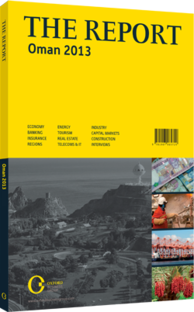Pan-Arabia Express: Plans to implement a regional rail network are gathering steam
In one of the most exciting and ambitious transportation projects ever seen in the Arabian Peninsula, plans for a railway linking Oman to the UAE, Saudi Arabia, Bahrain, Qatar and Kuwait are now under way. The first phase of the GCC rail project is scheduled to be operational in late 2018, with the railway eventually extending all the way down the coast of the sultanate from Muscat to Salalah. The overall cost has been set at approximately $15.5bn, with the railway significantly accelerating the transport of passengers and freight among the GCC member countries.
The project is not without its challenges. In the first instance, it requires all six GCC countries’ rail systems to conform to uniform standards and specifications, while border crossings will also have to be smooth and customs practices streamlined. Success depends greatly on all six countries orchestrating their individual projects in line with each other. The prize would, however, be a major triumph for GCC integration.
Facts & Figures
At 1061 km, Oman’s stretch of the GCC railway should become a major asset to the country’s infrastructure and boost its transport and logistics sectors. This stretch of rail will cost the government more than $5bn to develop and build, but once the network is completed, it will span the entire country, extending from the border with the UAE in the north to Salalah in the far south. Branch lines will then connect to the country’s other key economic centres.
According to media reports in 2012, the national railway project is planned to unfold in three stages. The first will see a 136 km link up between the UAE city of Al Ain and the industrial port of Sohar, with an 8-km spur line to Buraimi. The line will then continue on to the capital, Muscat, and thereafter to stations at Sinaw, Ibra, and the new port of Duqm. Stage two will connect Duqm to the southern port city of Salalah, while stage three will connect across the border to Yemen.
Phases & Plans
The first phase of the line has nine main stations, located at Sohar, Muscat, Barka, Duqm, Izki, Sinaw, Buraimi, Sunainah and Khatmat Malaha.
Large freight yards are planned for Barka, Al Misfah, Sohar, Duqm and Sunainah (Buraimi), while smaller yards will be located at Suwaiq, Sinaw, Buraimi and Khatmat Malaha. The full network is expected to have a daily freight capacity of approximately 8800 tonnes, according to Oman’s Rail Working Group.
Preliminary plans were for the railway system to have double line, electric traction power. This would allow passenger trains to travel at a speed of up to 350 km per hour (kph) and freight trains to travel up to 200 kph. Omani officials plan to follow European Train Control System Level 2, with no level crossings. However, other GCC countries are planning to use diesel traction power, making compatibility with Oman’s electric power an issue. The decision to run the rail network on electricity is now reportedly under review.
Timeline
Meanwhile, the timeline for and content of the tenders for the project have undergone several recent transformations. A tender for the appointment of an international consultant to design the railway project was announced earlier in the year, and then revoked in early September. At the time of writing, the Ministry of Transport and Communications was planning to announce a replacement tender for the appointment of a consultant to undertake the preliminary design of the rail network. This tender would thereafter be followed by two additional tenders: one for detailed design and build, and one for project management consultancy and supervision services. A number of international design engineering companies have partnered up to compete for the contracts, with consortiums including Systra, Parsons and Atkins; AECOM, DBI and Cowi & Partners; Prointec Group, ALG, Idom and Eurostudies; Mott MacDonald, Italferr and WorleyParsons; and eight Korean businesses led by Korea Rail.
Completion of the design phase is scheduled for the end of 2014, with the construction phase set to begin in mid to late 2014. The initiative looks set to help bring new added value to operations in Salalah, Duqm and Muscat, along with the larger GCC region as a whole.
You have reached the limit of premium articles you can view for free.
Choose from the options below to purchase print or digital editions of our Reports. You can also purchase a website subscription giving you unlimited access to all of our Reports online for 12 months.
If you have already purchased this Report or have a website subscription, please login to continue.

